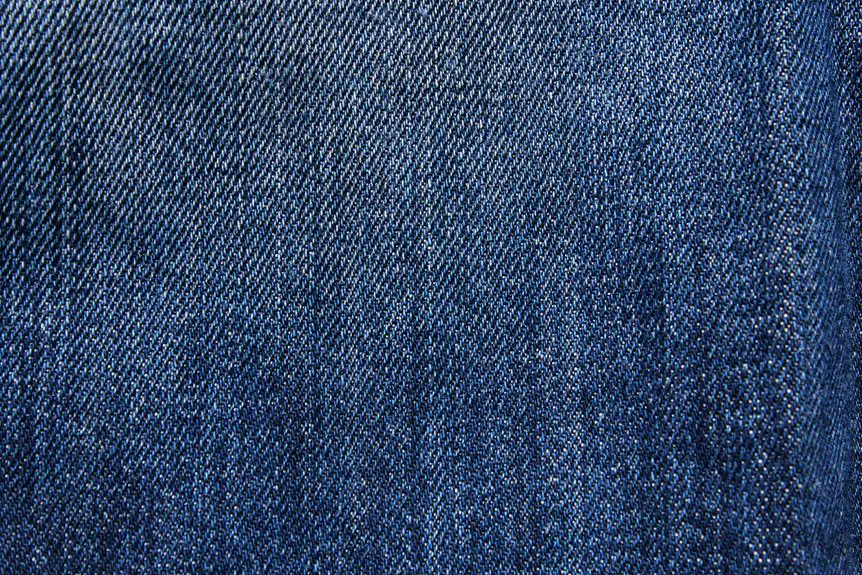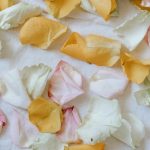Piqué fabric is a durable, breathable cotton textile known for its raised, waffle-like texture created by a unique double weave. You’ll find it comfortable and wrinkle-resistant, making it ideal for casual polos and formalwear alike. Originating in 19th-century France, piqué combines craftsmanship with functionality, balancing softness with structure. Its various weave patterns, like corded and honeycomb, add visual interest and airflow. Keep exploring to uncover how piqué’s history and care tips enhance its appeal.
Table of Contents
Key Takeaways
- Piqué fabric features a unique raised weave pattern creating a textured, breathable surface often made from cotton or cotton blends.
- Its distinctive weave forms small raised areas separated by flat sections, enhancing airflow and visual depth.
- Types of piqué weaves include corded, honeycomb, waffle, birdseye, and mattelassé, each offering different textures and durability.
- Originating in 19th century France, piqué mimics hand-stitched embroidery and was initially used for formal men’s shirts.
- Piqué is durable, wrinkle-resistant, moisture-wicking, and easy to care for with cold washing and low-heat ironing to maintain shape.
Defining Piqué Fabric: Characteristics and Composition
Piqué fabric stands out for its unique texture and durability, making it a popular choice in fashion and upholstery.
When you choose piqué, you’re picking a fabric known for its raised, waffle-like pattern that adds both visual and tactile interest. It’s typically made from cotton or a cotton blend, providing breathability and comfort.
You’ll find piqué fabric often used in polo shirts and summer dresses because it balances sturdiness with softness. Its structure helps maintain shape and resist wrinkles, so your garments look sharp longer.
Plus, piqué breathes well, keeping you cool and comfortable. Understanding these characteristics helps you appreciate why piqué remains a go-to fabric for casual yet polished styles.
The Distinctive Weave Pattern of Piqué
You’ll notice that piqué fabric stands out because of its unique raised weave, which gives it a textured feel.
This weave creates distinct patterns that can vary, adding visual interest and durability.
Understanding these variations helps you appreciate why piqué is popular in both casual and formal clothing.
Unique Raised Weave
The unique raised weave gives piqué fabric its signature texture and breathability. When you look closely, you’ll notice tiny raised cords or geometric patterns created through a special weaving technique. This isn’t just for looks—it allows air to flow freely, keeping you cool and comfortable.
The weave forms small, raised areas separated by flat sections, which adds depth and dimension to the fabric’s surface. Because of this structure, piqué feels sturdy yet lightweight, making it perfect for everything from polo shirts to elegant dresses.
You’ll also appreciate how this raised weave resists wrinkles and holds its shape well, so your clothes stay crisp even after long wear. Understanding this weave helps you recognize why piqué is both functional and stylish.
Textured Pattern Variations
Although many fabrics rely on simple weaves, piqué stands out because of its varied textured patterns that add both visual interest and tactile appeal.
When you look closely, you’ll notice piqué’s signature raised cords or waffle-like textures, created through a double or triple weave technique. These patterns aren’t just decorative; they enhance breathability and durability.
You can find different variations like birdseye, honeycomb, and waffle piqué—each with its unique geometric design. Birdseye features tiny, repetitive diamond shapes, while honeycomb shows off hexagonal patterns resembling a beehive.
Waffle piqué, true to its name, has a grid-like texture that feels soft yet structured. These distinct weaves give piqué fabric its classic look and make it ideal for everything from polo shirts to elegant dresses.
Exploring the Texture: How Piqué Feels and Looks
When you touch piqué fabric, you’ll notice its distinctive raised texture that sets it apart from smoother materials. This texture gives piqué a subtle three-dimensional look, making it visually interesting and tactile. You’ll find it both breathable and sturdy, perfect for garments needing structure without sacrificing comfort.
Here’s a quick look at piqué’s texture characteristics:
| Feature | Description |
|---|---|
| Raised Pattern | Noticeable on the fabric surface |
| Texture Feel | Slightly bumpy, firm yet soft |
| Visual Appeal | Adds depth and subtle elegance |
This combination of feel and appearance makes piqué a popular choice for sporty and casual wear, delivering a unique fabric experience every time you wear it.
Common Types of Piqué Weaves
Feeling piqué’s unique texture makes you appreciate how its weave shapes both appearance and durability.
The distinctive piqué weave defines its texture, enhancing both the fabric’s look and lasting strength.
You’ll find several common piqué weaves, each offering distinct patterns and tactile experiences. These weaves create raised cords or geometric patterns, blending strength with breathability.
Here are the typical types you might encounter:
- Corded Piqué: Features pronounced parallel cords, adding a structured feel.
- Honeycomb Piqué: Resembles a honeycomb pattern, offering a soft, textured surface.
- Waffle Piqué: Displays a grid-like, waffle texture that traps air for comfort.
- Birdseye Piqué: Small, diamond-shaped patterns create a subtle yet refined texture.
- Mattelassé Piqué: A thicker weave with a quilted appearance, enhancing durability.
Each type gives piqué fabric its signature look and functional benefits you’ll enjoy.
Historical Origins of Piqué Fabric
Since its rise in the 19th century, piqué fabric has captivated textile makers and fashion enthusiasts alike with its distinctive texture and durability.
You’ll find that piqué originated in France, where skilled weavers developed the fabric to mimic the look of hand-stitched embroidery using a specialized weaving technique. This method creates raised parallel cords or geometric patterns, giving piqué its signature waffle-like texture.
Originally, piqué served practical purposes, often used for men’s shirts and formalwear due to its breathability and strength.
As you explore piqué’s history, you’ll notice how it evolved alongside industrial advancements, becoming easier to produce and more accessible.
Understanding these origins helps you appreciate the craftsmanship and innovation woven into every piqué textile today.
Piqué in Fashion: Classic and Contemporary Uses
Piqué fabric has long held a cherished place in fashion, combining style with practicality. When you wear piqué, you tap into its rich heritage while embracing modern trends.
Classic polo shirts often showcase piqué’s textured weave, giving you a sporty yet refined look. Contemporary designers use piqué in dresses and blazers, adding subtle dimension and breathability to your wardrobe.
You’ll also find piqué in:
- Tailored shorts perfect for summer outings
- Lightweight jackets with a structured feel
- Casual yet polished skirts
- Sporty dresses balancing comfort and elegance
- Accessories like textured tote bags
Advantages of Using Piqué Fabric
Several key benefits make piqué fabric a smart choice for your wardrobe. You’ll appreciate its durability, breathability, and textured appearance that adds subtle style to any outfit. Piqué’s moisture-wicking properties keep you comfortable during physical activities, making it ideal for sportswear and casual wear alike. Plus, its fabric structure resists wrinkles, so you stay sharp with minimal effort. Below is a quick overview of piqué’s advantages:
| Advantage | Benefit | Ideal Use |
|---|---|---|
| Durability | Long-lasting wear | Everyday clothing |
| Breathability | Keeps you cool | Sportswear |
| Texture | Adds visual interest | Casual and formal wear |
| Moisture-wicking | Manages sweat effectively | Activewear |
| Wrinkle resistance | Maintains neat appearance | Travel and office wear |
How Piqué Fabric Is Manufactured
Although the manufacturing process might seem complex, understanding how piqué fabric is made can help you appreciate its unique texture and durability.
Piqué is created using a special weaving technique that produces raised parallel cords or geometric patterns. You start with high-quality cotton yarns, which are tightly woven on a dobby loom.
This loom controls the intricate weave, forming the characteristic waffle-like texture. The fabric’s raised pattern is a result of double-weaving, where two layers interlace but don’t fully connect. This gives piqué its signature breathability and thickness.
Imagine:
- Cotton yarns stretched taut across the loom
- Interlacing threads forming ridges and valleys
- Raised geometric patterns emerging clearly
- Fabric with a sturdy yet soft hand feel
- Textured surface catching light and shadow perfectly
Caring for and Maintaining Piqué Garments
Understanding the fabric’s unique weave helps you care for piqué garments properly. Since piqué has raised patterns and texture, you’ll want to avoid harsh washing or drying methods that could crush the weave. Always wash piqué clothes in cold water on a gentle cycle to preserve texture. Avoid bleach and fabric softeners, which can damage fibers. When drying, lay the garment flat or hang it to dry, steering clear of high heat. Iron on a low setting if needed, placing a cloth between the iron and fabric to protect the weave.
| Care Tip | Reason |
|---|---|
| Cold water wash | Prevents shrinkage and fading |
| Gentle cycle | Protects texture and weave |
| No bleach | Avoids fiber damage |
| Air dry | Maintains fabric shape |
| Low iron setting | Protects raised patterns |
Comparing Piqué to Other Textured Fabrics
How does piqué stack up against other textured fabrics you might be considering?
Piqué stands out with its distinct waffle-like pattern, offering both breathability and durability. Unlike plain weaves, its raised texture adds dimension without bulk, making it perfect for tailored looks.
Piqué’s unique waffle-like texture blends breathability with durability, adding dimension without extra bulk for sharp, tailored style.
When you compare it to fabrics like jacquard or brocade, piqué feels lighter and less ornate, fitting casual to semi-formal styles effortlessly.
Here’s a quick visual guide to help you:
- Piqué: Honeycomb texture, breathable, medium weight
- Jacquard: Intricate woven patterns, heavier, formal
- Brocade: Raised floral designs, rich and heavy
- Seersucker: Crinkled stripes, lightweight, summery
- Waffle cloth: Deep grid texture, cozy, often for towels
Each fabric has its charm, but piqué balances style and comfort uniquely.
Frequently Asked Questions
Can Piqué Fabric Be Recycled or Is It Eco-Friendly?
You can recycle piqué fabric if it’s made from natural fibers like cotton. However, its eco-friendliness depends on production methods and fiber content, so always check labels and recycling options to minimize environmental impact.
Is Piqué Fabric Suitable for Upholstery or Home Decor?
You might think piqué fabric suits upholstery, but its textured weave can wear out quickly with heavy use. It’ll work for light decor like cushions, but avoid it for high-traffic furniture to keep it looking fresh.
How Does Piqué Fabric Perform in Extreme Weather Conditions?
You’ll find piqué fabric handles moderate weather well but struggles in extreme heat or cold. Its breathable texture helps with ventilation, but prolonged exposure to harsh conditions can weaken its fibers and affect durability.
Are There Any Health Concerns Related to Piqué Fabric?
You won’t find hidden thorns in piqué fabric’s garden—it’s generally safe and breathable. Unless you’re allergic to cotton or synthetic blends, you won’t face skin irritations or health concerns wearing piqué in daily life.
What Are the Best Brands Known for Piqué Fabric Clothing?
You’ll find top piqué fabric clothing from brands like Ralph Lauren, Lacoste, and Brooks Brothers. They’re known for quality, comfort, and classic styles, so you can trust their piqué polo shirts and apparel to last.
- Recycling Nonwoven Fabrics: Is It Possible? - July 11, 2025
- Recycling Nonwoven Fabrics: Is It Possible? - July 11, 2025
- Recycling Nonwoven Fabrics: Is It Possible? - July 11, 2025





